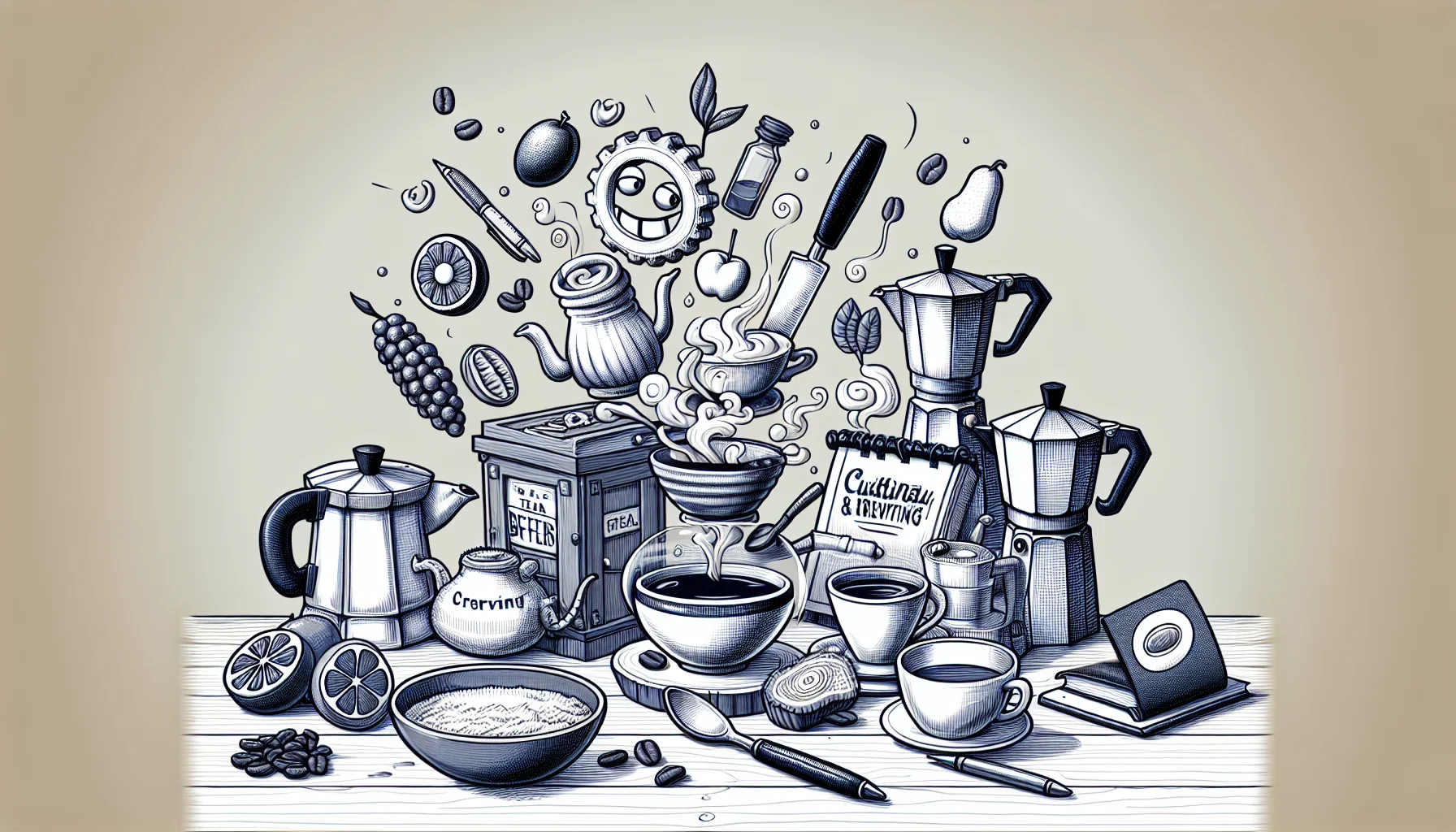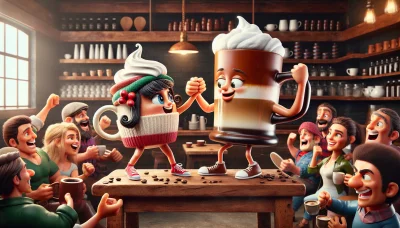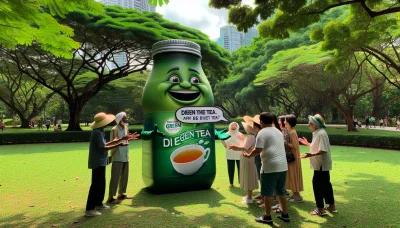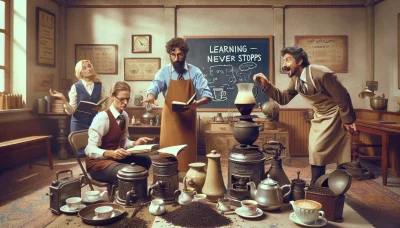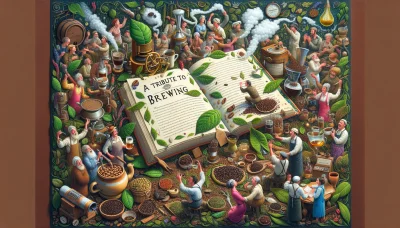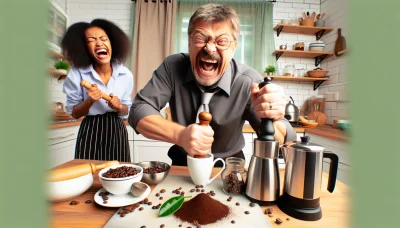Culinary Brews A Food Writing Workshop Quiz
Test Your Knowledge
Question of
Culinary Brews: A Food Writing Workshop
Welcome to "Culinary Brews: A Food Writing Workshop," where we delve into the aromatic world of tea and coffee. This unique workshop is designed for enthusiasts eager to explore the art of brewing and the rich narratives surrounding tea and coffee. From the origins and cultural significance of these beloved beverages to the latest trends in brewing techniques and related products, our sessions promise to enrich your palate and your prose. Join us to transform your passion for tea and coffee into captivating stories and reviews.
The Art of Tea Brewing
The history of tea brewing is as rich and varied as the cultures that cherish this timeless beverage. Originating in ancient China, the art of tea brewing has traversed continents and centuries, evolving into a revered culinary practice that symbolizes hospitality, tranquility, and communion with nature. In the realm of culinary arts, tea brewing is not merely about the infusion of leaves in water; it is an intricate ritual that encompasses the selection of leaves, the temperature of the water, and the timing of the infusion, each element meticulously calibrated to extract the tea's quintessential flavors and aromas. Beyond its culinary significance, tea brewing has also given rise to an array of related products, from intricately crafted teapots and cups to a diverse palette of tea varieties, each with its own unique story and sensory profile. Thus, the art of tea brewing stands as a testament to human creativity and our enduring quest for sensory refinement and cultural expression.
Essential Tools for Tea Brewing
- Teapot - for steeping the tea leaves.
- Tea Kettle - to boil water.
- Tea Strainer or Infuser - to separate the leaves from the liquid.
- Tea Cups - for serving the tea.
- Tea Scoop or Spoon - for measuring the right amount of tea leaves.
- Electric Kettle with Temperature Control - for precise water temperature.
- Timer - to ensure proper steeping time.
- Tea Storage Containers - to keep tea leaves fresh.
The Process of Tea Brewing
Brewing the perfect cup of tea is an art that has been refined over centuries, combining tradition with personal preference. The process begins with selecting your tea, which could range from black, green, white, or oolong, among others. Next, measure your tea, typically one teaspoon of loose leaf tea per 8 ounces of water. The quality of water is crucial; use fresh, filtered water if possible. Heat the water to the appropriate temperature, which varies depending on the type of tea - for example, green tea does best with water around 175°F to 185°F, while black tea prefers boiling water at about 212°F. Once your water is heated, pour it over the tea leaves and let it steep. Steeping time is vital and varies by tea type; green tea may only need 2-3 minutes, whereas black tea can steep for 3-5 minutes. After steeping, remove the tea leaves to prevent overbrewing, which can lead to bitterness. Finally, enjoy your tea as is or with additions like milk, sugar, or lemon as per your taste. This simple yet precise process can yield a comforting and delightful cup of tea, offering a moment of tranquility or a warm embrace to start your day.
The Art of Coffee Brewing
Coffee brewing, a practice as rich in history as it is in flavor, has been an integral part of culinary arts for centuries. Originating in the ancient coffee forests on the Ethiopian plateau, the discovery of coffee and its potential has led to its spread across the globe, becoming a staple in various cultures and cuisines. The art of coffee brewing is not just about the act of making coffee; it's about the careful selection of beans, understanding the impact of roasting levels, and mastering various brewing techniques to enhance the flavor profile of the coffee. From the traditional Turkish Ibrik to the modern Espresso machine, each method offers a unique taste and experience, reflecting the cultural significance and innovation in coffee brewing. This craft is closely related to tea brewing, where similar principles of temperature, timing, and quality of ingredients play crucial roles in achieving the perfect cup. Both arts showcase the importance of precision and care in the culinary world, highlighting how simple ingredients can be transformed into complex and enjoyable beverages.
Essential Tools for Coffee Brewing
- Coffee Grinder - for freshly ground beans
- Scale - to measure coffee and water accurately
- Kettle - preferably a gooseneck for precise pouring
- Coffee Maker - could be a French Press, Espresso Machine, or Drip Brewer
- Filter - necessary for certain types of brewers like drip or pour-over
- Tamper - for packing coffee grounds in an espresso machine
- Coffee Mug - to enjoy your freshly brewed coffee
- Cleaning Brush - to maintain your equipment
The Process of Coffee Brewing
The art of coffee brewing is both a science and a craft, a delightful ritual for many around the globe. The journey to a perfect cup of coffee involves several key steps, each influencing the final flavor and aroma. First, select high-quality, freshly roasted coffee beans. The choice of beans is akin to selecting the best tea leaves for brewing; it sets the foundation for the taste experience. Next, grind the beans to the appropriate coarseness or fineness, depending on the brewing method chosen, similar to how the grinding of tea leaves affects the strength and flavor of tea. Water temperature is crucial; just as with brewing tea, too hot can scorch the coffee grounds, while too cool water will under-extract, leading to a weak brew. The recommended temperature is between 195°F to 205°F. The brewing method comes next, from the pour-over, embodying the patience and precision of tea ceremonies, to the French press, espresso, or cold brew, each offering a distinct flavor profile and mouthfeel. Finally, the brewing time should be carefully controlled. Just as steeping tea for the right amount of time is essential for extracting the desired flavor notes without bitterness, coffee brewing times vary by method but are critical for achieving the perfect balance between strength and smoothness. The result is a rich, aromatic cup of coffee, a testament to the care and attention paid throughout the brewing process, much like the revered practice of tea brewing.
Comparative Table of Tea and Coffee Brewing
| Aspect | Tea | Coffee |
|---|---|---|
| Process |
|
|
| Tools |
|
|
| Techniques |
|
|
| Related Products |
|
|
